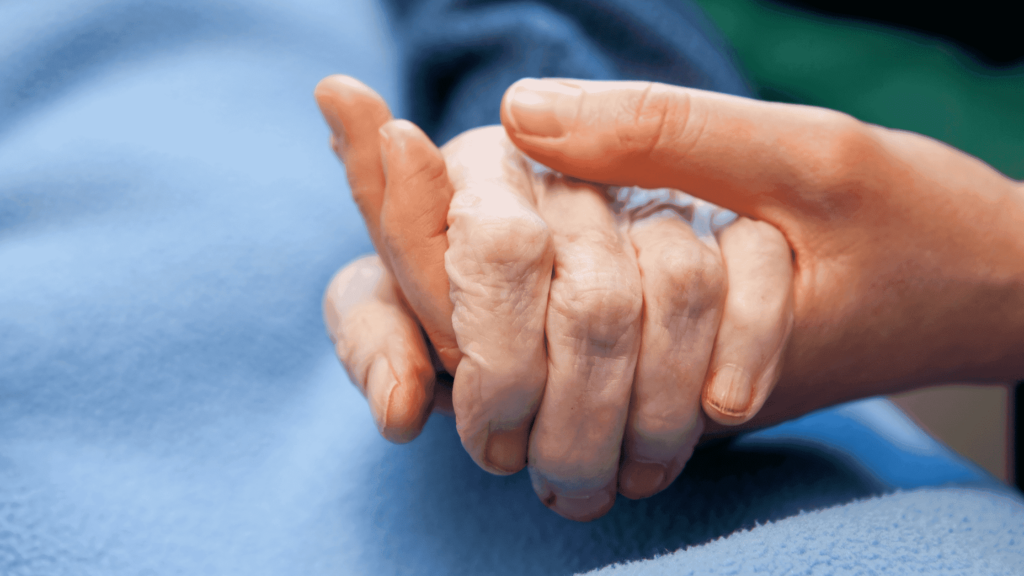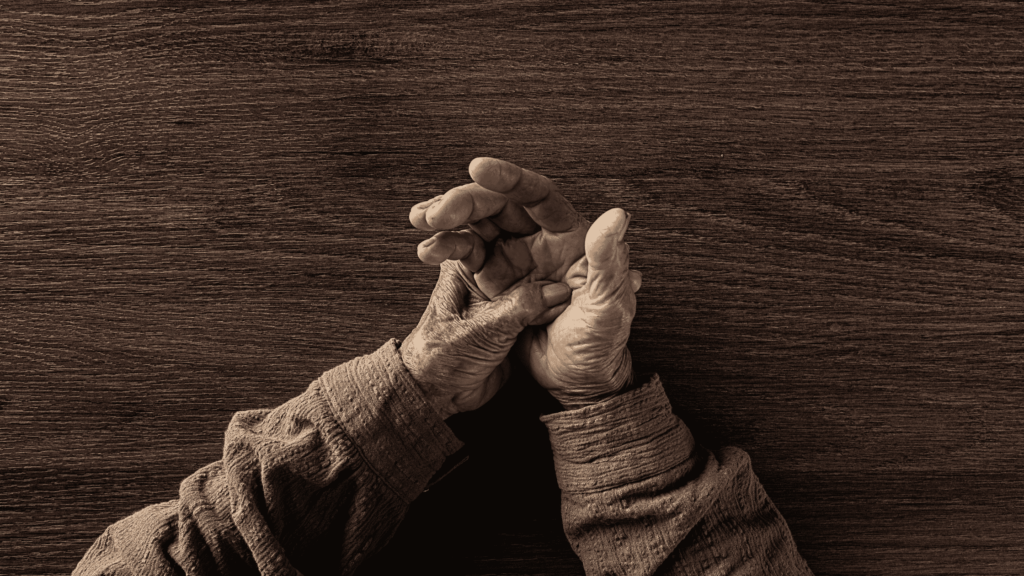© 2024 Springhill Home Health & Hospice
All Rights Reserved
All Rights Reserved
This National Interprofessional Healthcare Month, Springhill Home Health & Hospice extends our sincere gratitude to our valued referral partners.
Your dedication to providing exceptional care for your patients inspires us. We recognize the critical role you play in their overall well-being, and we deeply appreciate your trust in partnering with us to extend that care into the home environment.
Together, through effective interprofessional collaboration, we strive to:

We are committed to clear and consistent communication:
As trusted partners, we are always just a phone call or email away. Please don’t hesitate to reach out to us for any patient who might benefit from our comprehensive home health services.
Thank you for choosing Springhill Home Health & Hospice as your partner in delivering exceptional patient care.

Caring for a loved one on hospice care can be a challenging and emotional experience. One of the biggest concerns for families is often pain management. Here’s what you need to know about pain medications at the end of life, dispelling common misconceptions and empowering you to make informed decisions for your loved one.
Hospice care focuses on comfort and quality of life for people in the final stages of a serious illness. It’s NOT about hastening death, but about ensuring dignity and alleviating suffering. Pain medications play a crucial role in achieving this goal.
By understanding the role of pain medications in hospice care and addressing common concerns, you can make informed decisions and ensure your loved one receives the comfort and support they deserve during this sensitive time.
Living with a chronic condition, or caring for someone who does, can be a profound and life-changing experience. Both roles come with their unique sets of challenges, stresses, and rewards. It’s vital to find effective ways to manage stress to maintain both physical health and emotional well-being. This guide explores practical strategies for individuals with chronic conditions and their caregivers to manage stress and improve their quality of life.


Managing stress is crucial for both individuals with chronic conditions and their caregivers. By embracing mindfulness, focusing on physical wellness, and utilizing available resources, it’s possible to navigate these challenges with grace and resilience. Remember, self-care is not an act of selfishness but a necessity, enabling you to provide the best care for your loved one.
This National Cancer Control Month, empower your patients with comprehensive care at home.
As an Oncologist, you understand the unique needs of patients facing a cancer diagnosis. Home Health services can be a valuable extension of your practice, providing a seamless continuum of care during this critical time.

Here’s how partnering with Springhill Home Health benefits your patients:
We collaborate closely with you to ensure a coordinated care plan that meets each patient’s specific needs.

Springhill Home Health is dedicated to providing exceptional care that complements your expertise.
Partner with us to empower your patients to heal and thrive in the comfort of their own homes.
Contact us today to discuss a referral program tailored to your practice.
Together, let’s ensure the best possible outcomes for your patients during and beyond their cancer treatment.
More than 1.7 million patients received hospice care annually in the United States. In the hospice setting, narcotics, often known as opioids, play an essential role in relieving pain and shortness of breath for our loved ones with a terminal illness. The use of narcotics in hospice care is generally safe and effective. However, healthcare providers, patients, and their families must understand the potential risks of using these medications.
Narcotics offer many benefits, including the management of severe pain and shortness of breath that hospice patients often experience. Decreasing pain and discomfort can significantly improve their quality of life in several ways, allowing them to engage more fully in everyday activities. Available dosage forms include tablets, liquid, patches, and injections, allowing for flexibility based on each patient’s needs.

While opioids can be highly effective in controlling pain, side effects can also negatively impact the patient’s quality of life. Common side effects to consider are sedation, constipation, nausea, and confusion. Constipation caused by opioid medications is extremely common and can sometimes limit the use of higher doses that may be needed to successfully manage pain.
Because all narcotics cause constipation, this is a significant side effect that we must address. Unlike other gastrointestinal side effects from narcotics, which may improve over time, opioid-induced constipation is persistent. Without a proactive bowel regimen, constipation can become chronic, increasing the risk of complications such as bowel obstructions.
A bowel obstruction occurs when a blockage in the intestine prevents the normal movement of food and waste through the digestive system. Narcotics can slow the movement of the intestines, leading to a buildup of food and waste. This may eventually cause a blockage. Fortunately, bowel obstructions in hospice care are relatively uncommon, occurring in about 3% to 5% of patients.
A bowel regimen typically includes the use of stimulant or osmotic laxatives, stool softeners, and dietary changes to help prevent and manage constipation. Stimulant laxatives can help stimulate bowel movements, while stool softeners can help soften the stool, making it easier to pass. Increased fluid intake and dietary fiber can also promote regular bowel movements.
A bowel obstruction in a hospice patient can be a serious condition. If left untreated, a bowel obstruction can lead to complications such as bowel perforation, infection, or sepsis, which can be life-threatening.
The common symptoms of a bowel obstruction include:
Managing bowel obstructions in hospice patients can be challenging. Treatment should include a multidisciplinary approach that focuses on providing comfort and relieving symptoms. In some cases, surgery may be needed to remove the blockage, but this is often not possible in hospice patients due to the risks involved.

Non-surgical treatments are typically used to decrease the degree of blockage, stimulate the bowel, and manage symptoms. These treatments may include the following:
The use of narcotics in hospice care is an essential part of managing pain and improving the quality of life for patients with a terminal illness. While bowel obstruction is a hospice patient is a serious condition, the use of a consistent bowel regimen is an important step in reducing this risk. Clinicians and caregivers alike must be aware of the signs of bowel obstruction in hospice patients and, if they suspect a problem, seek medical attention quickly. By promptly recognizing and treating bowel obstructions, we can alleviate symptoms and improve patients’ comfort in their last days.


Hospice care offers significant benefits for patients with advanced PD, providing expert symptom management, holistic support, and respect for patient autonomy. An early referral can enhance quality of life and support families during this sensitive phase. Collaboration between physicians and the hospice team optimizes care transitions and ensures informed decision-making for patients and families.
Please contact us to learn more about how we can support you and your patients who need the extra level of care that hospice provides.
As medical professionals, we are committed to providing excellent care and support for our patients. This is especially true when caring for patients with advanced cancers like end-stage colon cancer. In these challenging times, hospice care becomes crucial by offering comfort, dignity, and quality of life that extends beyond just the last days.
Understanding how hospice care can be a valuable resource is vital for helping your patients with end-stage colon cancer.

Hospice care is recommended for patients with advanced, life-limiting illnesses — focusing on quality of life and comfort in their final stages. Managing symptoms and upholding patient dignity are central to our approach. Typically, hospice care begins when a patient has less than six months to live, involving discussions among the patient, their family, and their primary care doctor.
Contrary to misconceptions, hospice care ensures a quality life in the illness’s last stages, offering patients the option to resume active treatment if desired. Primary care doctors play an integral role in initiating and guiding these discussions, especially when other treatment options are no longer viable.
Sam, a 68-year-old patient with end-stage colorectal cancer, had advanced to the point where options for treatment were no longer possible. Sam, in collaboration with his family and primary care physician, chose hospice care to treat his condition. This decision allowed Sam to receive pain and symptom management in the familiar surroundings of his home, making his final months as peaceful and comfortable as possible. Hospice care also provided emotional support to Sam and his loved ones, guiding and comforting them through this difficult journey. As a result, Sam’s final months were marked by meaningful moments and the warmth of home, providing a dignified and compassionate end-of-life experience.

End-stage colon cancer can be extremely challenging for patients and their families. As the disease progresses, patients like Sam may experience complex symptoms and significant emotional and psychological stress. Here is how hospice can benefit your patients:
Choosing hospice care for patients with end-stage colon cancer is about prioritizing comfort and quality of life. It’s about redefining hope — focusing on family connections in a peaceful end-of-life experience. Doctors often recommend hospice care, like in Sam’s situation, to keep patients comfortable and supported in their final months. This decision helps the patient and makes it easier for healthcare providers. It ensures patient and family satisfaction.

National Nutrition Month offers a unique opportunity to explore the intersection of nutrition and mindfulness. Mindful eating is about more than what we eat; it’s about how we eat, bringing full attention to the experience of nourishment and the act of caring for the body. This practice is particularly beneficial in home health care or hospice care, where certain physical conditions may hinder the basic joy of eating.
Eating is as essential of a bodily function as breathing. Since we use the breath as a source of mindfulness, then it’s only natural to extend that awareness to other human functions, like eating.
Mindful eating is an approach that involves being fully present during meals, paying attention to the taste, texture, and aroma of food. Instead of thinking of the inaccessible past or the imaginary future, the practice calls on focusing awareness on eating and eating only.
Is there a specific sensation you can notice while eating or drinking that you’ve never noticed before? Perhaps it’s a particular taste. Maybe it’s the food or water making its way through your body. Simply notice any sensations that arise.
Mindful eating transforms routine meals into sources of pleasure and comfort, creating a deep connection between body and mind. It also provides a fresh perspective to alleviate negative thought patterns, fostering gratitude for easy access to food—a relatively recent achievement for humanity.

Adapting to the changing nutritional needs is crucial. Mindfulness helps in recognizing these changes without judgement, allowing caregivers to adjust meals according to preferences and needs, while still maintaining nutritional balance. This approach respects the patient’s bodily cues and enhances their sense of control and dignity.
Developing awareness of how certain foods impact your well-being is a key aspect of mindful eating. Start by paying close attention to how you feel after consuming different foods. Notice any changes in your energy levels, mood, digestion, or even sleep patterns. Does a particular food leave you feeling energized or sluggish? Do you experience a sense of calm or, conversely, agitation?
Keeping a simple food diary can be incredibly helpful in this process. In it, jot down what you eat and any physical or emotional responses you observe. Over time, patterns will emerge, guiding you towards foods that truly nourish and benefit your body and mind, and away from those that don’t align with your well-being.
Overall, knowing what to eat can be complicated, but Dr. Andrew Weil’s approach is quite simple: try to eat the rainbow. This means diversifying your diet with vibrant, colorful foods to ensure a variety of nutrients, health-protective phytonutrients, fiber, enjoyment, and balance.

The environment where one eats can significantly affect their experience. Creating a calm, pleasant dining atmosphere can encourage mindfulness and enhance the enjoyment of meals. Simple changes, such as reducing distractions, playing soft music, or using visually appealing tableware, can make a big difference. Of course, everyone is different, so change your environment to whatever makes you happy!
We invite you to embark on this journey of mindful eating, whether for yourself or in your caregiving practices. It’s an opportunity to transform everyday meals into moments of presence, gratitude, and joy.
Why not begin today? With your next meal, take a moment to fully engage with your food. Observe its colors, smell its aromas, and savor each bite. Notice how this simple act can change your experience of eating.
March marks Pulmonary Rehabilitation Month, a time dedicated to spotlighting the transformative impact of pulmonary rehabilitation on individuals living with chronic respiratory diseases such as Chronic Obstructive Pulmonary Disease (COPD), asthma, pulmonary fibrosis, and other lung conditions. This month, we not only focus on the remarkable journey of recovery and resilience facilitated by pulmonary rehabilitation programs but also delve deeper into the nuances of this comprehensive care.

Pulmonary rehabilitation always takes a holistic approach aimed at improving the overall quality of life for those affected by chronic respiratory conditions. This comprehensive intervention program includes patient-specific exercises, nutritional counseling, psychological support, and extensive education about lung health. Each aspect of this program is individualized to meet the unique needs of the patient, ensuring a personalized and effective rehabilitation process.
At the heart of pulmonary rehabilitation is the specialized exercise regimen meticulously developed by experienced Physical and Occupational Therapists. These exercises are designed not just to improve lung function and endurance, but also to help patients accomplish daily activities with reduced breathlessness. Patients often after being diagnosed with a persistent lifelong lung diagnosis lose hope in their ability to complete daily activities, which is why therapy/ exercise is so important to rebuild their independence and confidence. Beyond these benefits, these exercises play a crucial role in improving mucus mobility. Effective mucus clearance is essential for respiratory patients as it reduces the risk of infections and further lung complications. The movement and breathing techniques taught in these sessions are key to maintaining clear airways and improving overall health. “According to the 2017 report of the Global Initiative for Chronic Obstructive Lung Disease (GOLD), pulmonary rehabilitation (PR) is the most effective therapeutic intervention for reducing dyspnea and improving physical performance and quality of life.”1
Nutrition also holds a pivotal role in supporting lung function and the overall well-being of patients with respiratory conditions. Skilled Dieticians are able to develop a balanced diet for each patient rich in antioxidants, adequate hydration, and appropriate food choices can significantly impact mucus production and consistency. These dietary adjustments, along with weight management strategies, are essential for reducing breathing difficulties and enhancing lung health. Moreover, a well-balanced diet bolsters the immune system, which is particularly crucial for patients with chronic respiratory diseases, and ensures sufficient energy levels for daily activities and participation in rehabilitation exercises. Research has shown combining a nutritional advice and intensive exercise program into pulmonary rehab to greatly improve quality of life to our patients. 2
Chronic respiratory diseases can be mentally and emotionally taxing, often leading to conditions like anxiety and depression. Addressing the mental health aspect is a crucial component of pulmonary rehabilitation. Counseling services and support groups provided as part of these programs offer a safe and supportive environment for patients to share their experiences, challenges, and triumphs. This emotional and psychological support is invaluable in helping patients cope with their condition and improve their overall mental health.
A significant aspect of pulmonary rehabilitation is the education provided to patients and their families. This education encompasses various topics, including disease management, medication adherence, and effective breathing techniques. By equipping patients and their families with this knowledge, pulmonary rehabilitation programs empower them to take an active role in managing their condition. This proactive approach is vital in enhancing the effectiveness of the treatment and in improving the patient’s quality of life.
The success of pulmonary rehabilitation is largely attributed to the collaborative efforts of a multidisciplinary team. This team typically includes other healthcare professionals such as physicians, respiratory therapists, nurses, and psychologists. Each member plays a critical role, providing a comprehensive approach to care that addresses the physical, nutritional, and psychological needs of respiratory patients. Their combined expertise ensures that every aspect of the patient’s health is considered and catered to, leading to more effective and holistic care.

As we observe Pulmonary Rehabilitation Month, it’s important to recognize and celebrate the positive impact these programs have on the lives of patients with chronic respiratory diseases. It’s a time to raise awareness about the importance of pulmonary health and to acknowledge the dedicated professionals who support the respiratory wellness journey. Pulmonary Rehabilitation Month is not just a time for awareness; it’s an opportunity for reflection on the advancements in respiratory care and a call to action for healthcare providers and patients alike. Embracing the comprehensive care that pulmonary rehabilitation offers can significantly improve the lives of those living with chronic respiratory diseases, offering them a breath of hope and a path to better health.
Mathew Kovalchick, DPT, OCS
Citations:
1. Gloeckl R, Schneeberger T, Jarosch I, Kenn K. Pulmonary Rehabilitation and Exercise Training in Chronic Obstructive Pulmonary Disease. Dtsch Arztebl Int. 2018 Feb 23;115(8):117-123. doi: 10.3238/arztebl.2018.0117. PMID: 29526182; PMCID: PMC5852307.
2. Korkmaz C, Demirbas S, Vatansev H, Yildirim E, Teke T, Zamani A. Effects of comprehensive and intensive pulmonary rehabilitation and nutritional support on quality of life and functional status in patients with chronic obstructive pulmonary disease. J Int Med Res. 2020 Apr;48(4):300060520919567. doi: 10.1177/0300060520919567. PMID: 32314629; PMCID: PMC7175054.
Patient Safety Awareness Week provides an opportunity to focus on the critical issue of patient safety, particularly in Skilled Nursing Facilities (SNFs), Assisted Living Facilities (ALFs), and Home care/Hospice environments. These settings, catering to some of the most vulnerable populations, require specific safety protocols to protect residents and patients. This article aims to touch on some of the key safety measures that need to be accounted for and best practices for these care environments, ensuring the safety and well-being of residents, patients, and loved ones.
Each of these settings presents unique challenges and risks. In SNFs and ALFs, residents often face mobility or cognitive impairments, increasing the risk of falls or medication errors. In home care and hospice settings, the variability of the home environment and the need for family involvement in care add layers of complexity to maintaining safety standards.

In all of the settings, effective medication management is critical. This includes accurate medication administration, monitoring for adverse reactions, and coordination between various healthcare providers. Utilizing medication management technologies and involving caregivers and family members in the process can significantly reduce medication errors. Possibly leading to unwanted issues. Being aware of the adverse reactions can be simple, but it’s important to learn to recognize them.

Fall prevention is a major concern in SNFs and ALFs. Implementing regular risk assessments, modifying environments to ensure safety (e.g., installing grab bars, ensuring adequate lighting), and using mobility aids are essential measures for all residents. In home care settings, similar issues persist, however the additional need to assess the home environment and educate family members on fall prevention strategies are equally important. Caregivers and family members are usually with the patients longer than you are and ensuring they have the proper tools and education for safety is not always prioritized.

Infection control protocols are vital, especially in communal living environments like SNFs and ALFs, and for home care patients with weakened immune systems. In settings where patients interact with each other or are close by leads training in hand hygiene, proper use of PPE, and stringent cleaning protocols can help prevent the spread of infections. It’s easy to forget until it’s too late, then you will never forget again. to higher risks of infections spreading.

Emergency preparedness is crucial, particularly in SNFs and ALFs. This includes having evacuation plans, ensuring staff are trained for emergencies, and having adequate supplies and backup systems in place. In home care settings, creating a personalized emergency plan for each patient, involving caregivers, is essential. This could involve the best course of action for EMS to access the patient or evacuation safety from the residence.

All of these listed in the article require training, as this faced with not only an emergency, but a small decision to wash your hands or infection control could save someone’s life. Continuing education although healthcare providers view them as another thing on our to do list sometimes or something to cross off, it is to ensure the safety of yourself and others.

Educating patients and families about safety measures, care plans, and what to expect in these settings allows them to participate actively in the care process and gives them a chance for them to advocate for their safety and well-being. This isn’t a job for them, it’s their life.
Patient Safety Awareness Week serves as a reminder of the continuous need to prioritize safety in these settings. By focusing on specific risks, developing tailored strategies, and involving caregivers, families, and patients, we can create safer environments for the ones we care for. Let’s use this week to recommit to the highest safety standards and to recognize the dedication of those who work tirelessly to provide safe, compassionate care. The patients will thank you.
Mathew Kovalchick, DPT, OCS